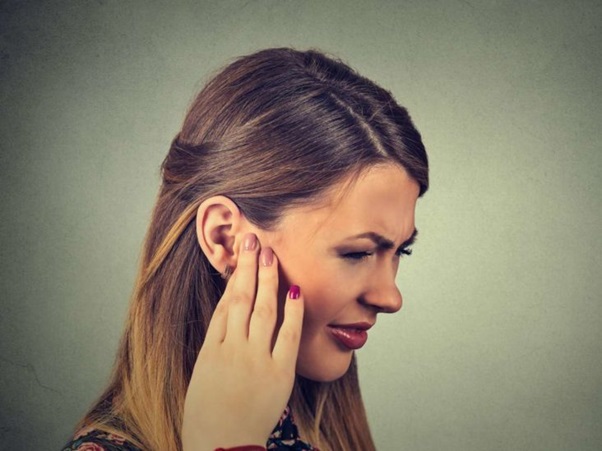The Causes of 3 Different Ear Infections
Otitis media, generally known as an ear infection, is a common condition that can afflict anyone at any age. They develop when the middle ear, which is the cavity behind the eardrum, is infected or swollen. Understanding the causes of ear infections is essential for prevention and successful treatment, despite the fact that they can be unpleasant and uncomfortable.
With a focus on delivering exceptional healthcare services, the ENT specialist in Umm Al Quwain offer personalized treatment plans tailored to each individual's specific needs, guaranteeing high-quality care for all ear, nose, and throat concerns.
In this article, we'll examine three different ear infections and examine each one's unique causes, signs, and complications.
-
Acute Otitis Media:
The most typical ear infection, known as acute otitis media (AOM), mostly affects young children. When the middle ear becomes infected and fluid builds up below the eardrum, it happens. Several factors contribute to the development of AOM:
- a. Bacterial Infection: A respiratory infection, like the common cold, that causes the Eustachian tubes to become blocked is frequently followed by AOM. Once inside the middle ear, bacteria like Streptococcus pneumoniae and Haemophilus influenzae can cause an infection.
- b. Eustachian Tube Dysfunction: The Eustachian tubes assist control air pressure and remove fluid from the ears. They run from the middle ear to the back of the throat. If these tubes get clogged or malfunction, fluid collects inside, providing the ideal conditions for bacterial development.
- c. Allergies and Environmental Factors: Children with allergies, exposure to secondhand smoke, or attending daycare facilities have a higher risk of developing AOM due to increased inflammation and susceptibility to infections.
Symptoms of AOM include ear pain, fever, fluid drainage from the ear, irritability in children, and hearing difficulties. In severe cases, complications like eardrum perforation and mastoiditis can arise.
- Otitis Media with Effusion:
Otitis media with effusion (OME), also known as serous otitis media or "glue ear," is characterized by fluid buildup in the middle ear without an active infection. OME commonly affects children but can also occur in adults. The causes of OME include:
- a. Eustachian Tube Dysfunction: Similar to AOM, dysfunction of the Eustachian tubes plays a significant role in the development of OME. When the tubes fail to adequately drain fluid from the middle ear, it can accumulate and persist, leading to OME.
- b. Allergies and Environmental Factors: The risk of having OME is increased by allergies, secondhand smoking exposure, and environmental contaminants, which can cause inflammation and obstruction of the Eustachian tubes.
- c. Upper Respiratory Infections: The respiratory system, particularly the Eustachian tubes, can expand and become inflamed as a result of viral infections like the flu or cold. This inflammation can disrupt proper fluid drainage, leading to OME.
Symptoms of OME include mild hearing loss, a sensation of ear fullness, and reduced ability to distinguish sounds in noisy environments. While OME often resolves spontaneously, it can persist and require medical intervention if it affects hearing or speech development in children.
- External Otitis (Swimmer's Ear):
When it comes to seeking specialized care for ear, nose, and throat conditions, the ENT clinic in Ajman provides comprehensive medical services and expertise to address a wide range of ENT-related issues. An infection of the ear canal known as external otitis, also referred to as swimmer's ear, is frequently brought on by bacteria or fungus. This kind of illness is frequently linked to:
- a. Excessive Moisture: Long-term contact to water, such as swimming or excessive perspiration, can damage the ear canal's waxy lining, leaving it more prone to infection.
- b. Injury or Irritation: Wearing hearing aids or earplugs, using cotton swabs, or scratching the ear canal with sharp items can result in minor abrasions or irritations that serve as entry points for bacteria or fungi.
- c. Environmental Factors: High temperatures, increased humidity, and humid climates can foster the development of bacteria and fungi in the ear canal, raising the risk of external otitis.
Ear pain, itching, redness, swelling, discharge, and temporary hearing loss are all signs of external otitis. To avoid complications like cellulitis or a more serious infection of the surrounding tissues, prompt treatment is crucial.
Conclusion:
Effective prevention and treatment depend on having a thorough understanding of the causes of various ear infections. Eustachian tube dysfunction and bacterial infections are frequent causes of acute otitis media, while allergies and otitis media with effusion are the main causes of acute otitis media with effusion. Excessive moisture and environmental variables frequently result in swimmer's ear, also known as external otitis.
Understanding the risk factors and signs of each type of ear infection can assist people in taking the proper precautions, getting care when they need it, and avoiding potential problems. People of all ages can dramatically lower their chance of developing ear infections and improve their ear health by practising excellent ear cleanliness, avoiding irritants, and promptly treating respiratory illnesses. If you're seeking specialized care for ear, nose, and throat conditions, look no further than the ENT specialists in Umm Al Quwain, who possess the expertise and knowledge to address your medical needs.
